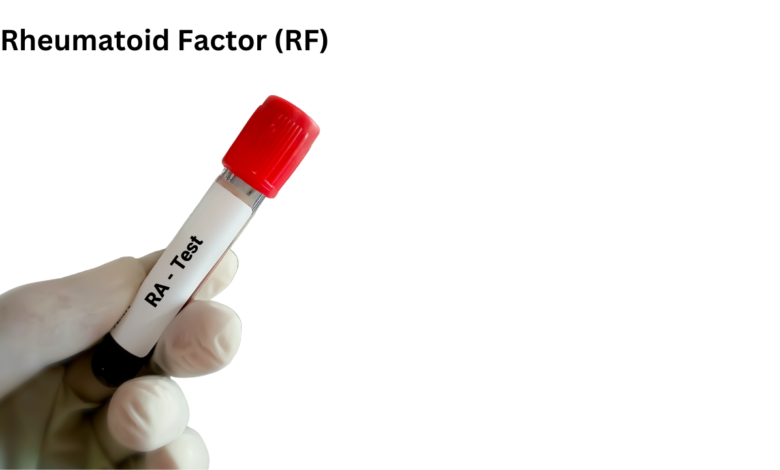Rheumatoid Factor (RF): To check for rheumatoid arthritis.
Rheumatoid Factor (RF): Understanding the Test and Its Implications

What is Rheumatoid Factor (RF)?
A rheumatoid factor (RF) test is a blood test used to detect the presence of rheumatoid factor, an antibody that is often found in people with rheumatoid arthritis. Rheumatoid arthritis is an autoimmune disease that causes inflammation of the joints.
Why Rheumatoid Factor (RF) is required?
RF tests are often used to:
- Diagnose rheumatoid arthritis: Elevated RF levels can suggest the presence of rheumatoid arthritis, although it’s not a definitive diagnosis.
- Monitor rheumatoid arthritis: RF levels can be monitored over time to track the progress of the disease or the effectiveness of treatment.
- Screen for rheumatoid arthritis: RF tests can be used as part of a general health checkup to screen for rheumatoid arthritis.
Which are the method of Rheumatoid Factor (RF)?
There are several different methods used to measure RF levels, including:
- Latex agglutination test: This method uses latex beads coated with rheumatoid factor to detect RF in the blood.
- Enzyme-linked immunosorbent assay (ELISA): This method uses enzymes to detect RF in the blood.
Who should go foe the Rheumatoid Factor (RF)?
Individuals who are experiencing symptoms of rheumatoid arthritis, such as joint pain, swelling, and stiffness, should consider an RF test. It may also be recommended for individuals with a family history of autoimmune diseases or those who have undergone certain medical procedures.
What are the result of Rheumatoid Factor (RF)?
The results of an RF test are typically reported as positive or negative. A positive RF test means that rheumatoid factor was detected in the blood. However, a positive RF test does not necessarily mean that you have rheumatoid arthritis. Other conditions, such as infections or other autoimmune diseases, can also cause elevated RF levels.
What are the component of Rheumatoid Factor (RF)?
An RF test involves drawing a blood sample and analyzing it in a laboratory. The specific method used may vary, but the overall process is similar.





